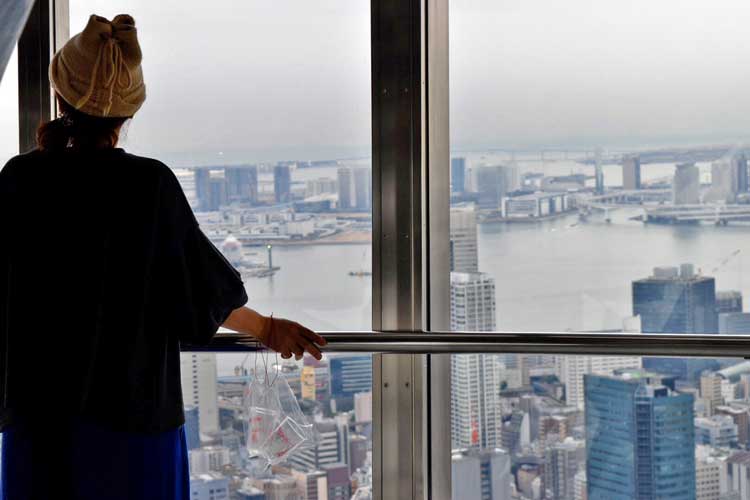

Tokyo Tower stands for Japan’s capital and is well-known around the globe. International travelers to Japan have been flocking here for years to enjoy a spectacular view of Tokyo from both lookouts. The impressive tower is 333 meters high and has two observation decks.
Tokyo Tower Climb
Visitors seem to like the self-supporting tower, because it has achieved more TripAdvisor stars than Tokyo Sky Tree, which is the 634 m broadcast tower, a new landmark in Tokyo. With more than 50 years of history, Tokyo Tower is a must-see destination for your Tokyo trip.
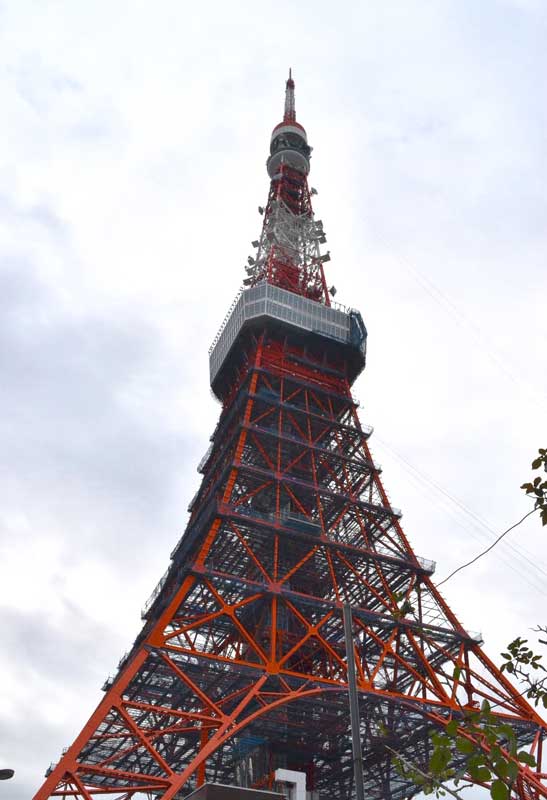
Taking the Lift is Too Speedy
Even the lower observation deck of Tokyo Tower, which is called the Main Deck, is 150 meters high. Naturally, you may think you should come up to the deck by elevator.
In fact, the tower has seven elevators, including direct elevators to the deck, and you can easily go up to in a minute. Moving in a lift is very convenient and effortless. For international travelers who are pushed for time, it may be the only means of ascending.
The direct elevators are, however, too speedy. You’ll miss the true experience of the tower. After getting in an elevator, checking the battery of your NIKON or CANON camera, and then talking about the nice smile of a lift operator with your traveling companion, you notice that your elevator is on the deck. What you gained in an instant of time might be lost in an instant as well.
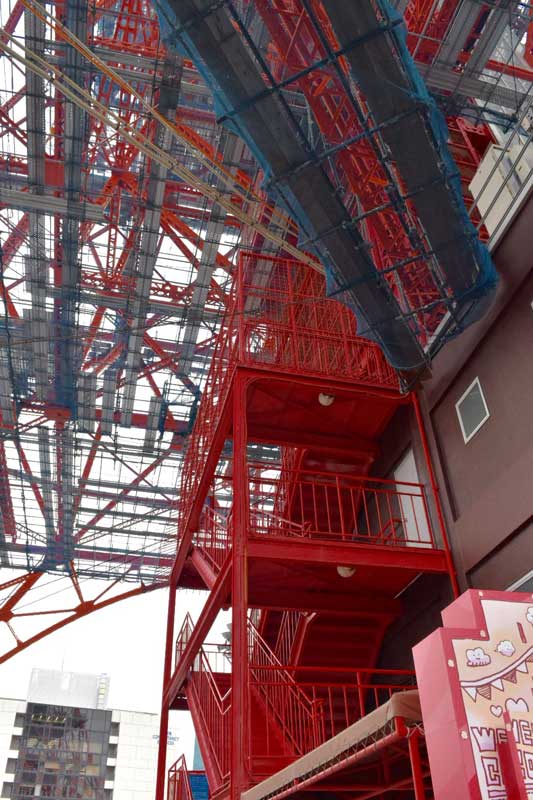
Climbing the Stairs of Tokyo Tower is an Adventure
If you have time to spare, I recommend walking up the stairs on foot to the lower outlook. The five-story building called Foot Town stands beneath the tower as an anchor, and more than 600 stairs begin from the roof terrace to Main Deck.
As long as you’re paying the 900 yen including tax (US$8) entrance fee, you can choose your route – either with the elevator or on foot. If you prefer to ascend more than 600 stairs, first head up to the roof terrace of Foot Town from the entrance floor with an elevator, and then find the gate of stars.
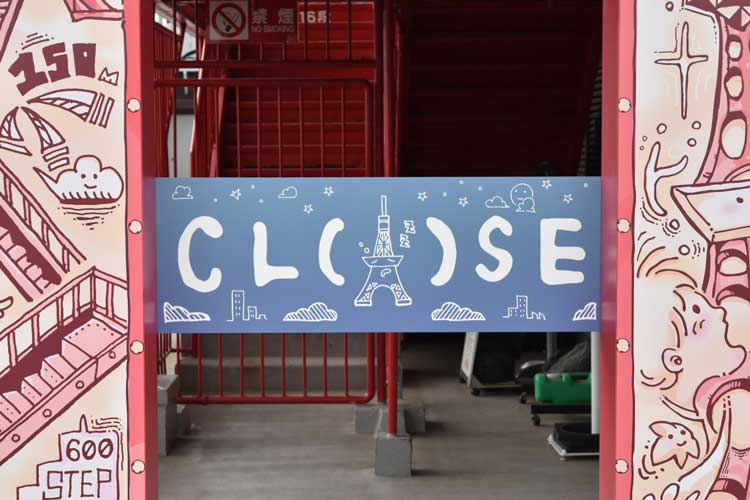
Nothing Protects You Against Strong Wind, Rain and Lightning
Please note that the route up the stairs to the lower outlook is only passable during the daytime on weekends, holidays and special days such as Valentine’s Day. You can’t climb the stairs at the Tokyo Tower if you come on a weekday.
Even when you visit the tower on weekends, in bad weather, the route also becomes impassable. This is because the stairs have no walls, but woven metal wires. Nothing protects you against strong wind, heavy rain and fatal lightning strikes.
Tokyo Tower stands on a hill. Higher grounds make the wind stronger. If your arrival day is cloudy and windy with a chance of rain, remember to call in advance to see whether the route is travel-able or not. Phone: 03-3433-5111 (Tokyo Tower)
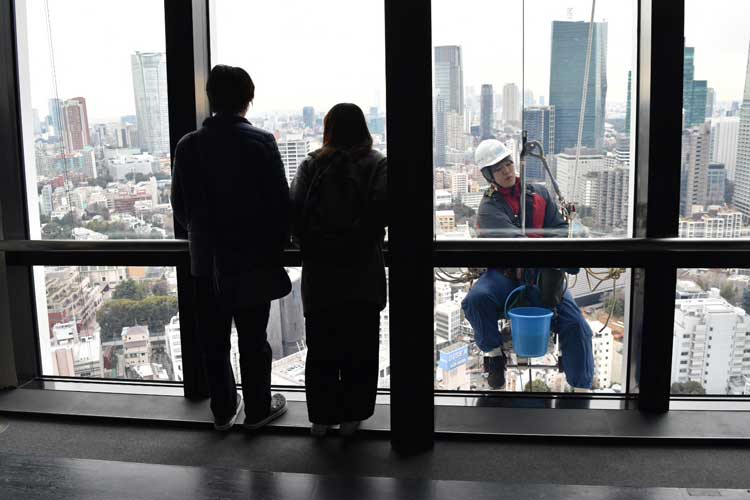
Let Curiosity Drive You
I don’t want to spoil your fun of ascending the 600 stairs of Tokyo Tower, so I’ll avoid giving a detailed description of the route. However, I’ll give you the high points of the stair trip.
You may feel that ascending more than 600 stairs is an ascetic practice, but the trip to the lower observatory on foot will go quicker than you think. The landscape changes its appearance as you go up, and the fresh breeze through the woven metal wires help you forget your fatigue. Soon, you’ll find yourself standing on the 100th stair.
Tack boards showing quizzes on banisters of stairs also entertain you. Unfortunately, the quizzes are written in Japanese, but they offer trivia games about Tokyo Tower.
When you reach the stair landing, you’ll find a tack board that says: “After repainting Tokyo Tower with 33,000 liters of paint by hand over five years, the 9,000 painters received commemorative gifts. What are they?”
The tack board showing the answer is on the banister in a higher landing. Curiosity drives you to go upstairs.
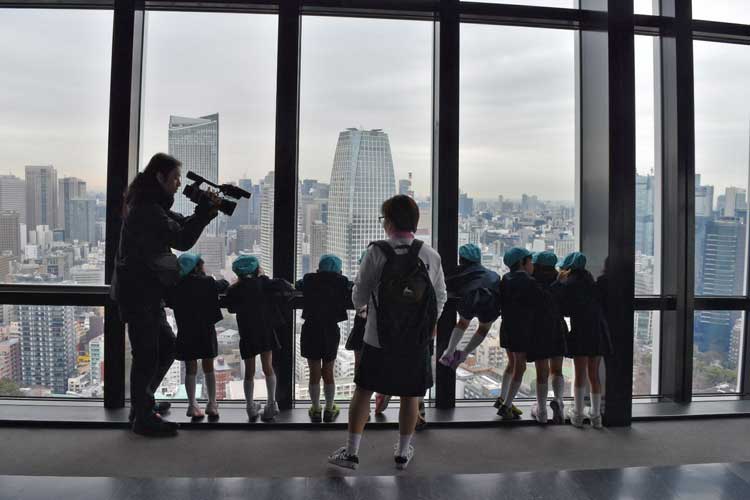
Breathtaking Scenery Awaits You
When passing the 400th stair, you might feel a little out of breath and sweaty, even in the winter. By this time, you and your traveling companions may say very little. You may also grow self-reflective. The breathtaking scenery, however, awaits you just a little further up the stairs.
In front of Main Deck, the stairs are surrounded by cement walls suddenly, and your view is entirely blocked. You’ll to advance just one more flight of bleak stairs. The stark sight, however, makes the scenery from the outlook doubly fantastic. That cooped-up feeling builds a tremendous sense of openness at the observatory.

Commemorative Cards at Tokyo Tower
At the exit gate of stairs at Main Deck, a staff hands you a commemorative card certificating that you have ascended the entire distance on foot. There are 10 different designs and are not for sale. They are no doubt memories of your Tokyo trip.
One more thing to note: the higher deck called Top Deck at 250 m height cannot be reached on foot. It’s only accessible by the direct elevators from the Main Deck. Arriving at Top Deck requires you to pay the additional fee and join the special tour, Top Deck Tour, which costs you 2,800 yen including tax per one tourist (for US$25).
I think the breathtaking scenery from the lower outlook is rewarding enough. If you have time to go up to Top Deck, rush headlong into the challenge of ascending the 600 stairs to Main Deck.
How to Get to Tokyo Tower
You can reach the Tokyo Tower from five subway stations:
Akabanebashi Station on Oedo Subway Line
Kamiyacho Station on Hibiya Subway Line
Onarimon Station and Shibakoen Station on Mita Subway Line
Daimon Station on Asakusa Subway Line
Author Bio: Masayoshi Sakamoto is a Japanese writer and translator based in Toyama. He writes news and columns for several publications and digital magazines.
- Get Inspired at Louisville’s Muhammad Ali Center - April 19, 2024
- What It’s Like to Live as an Expat: Lake Chapala, Mexico - April 18, 2024
- Top 5 Spots for Stargazing in North Carolina - April 17, 2024
